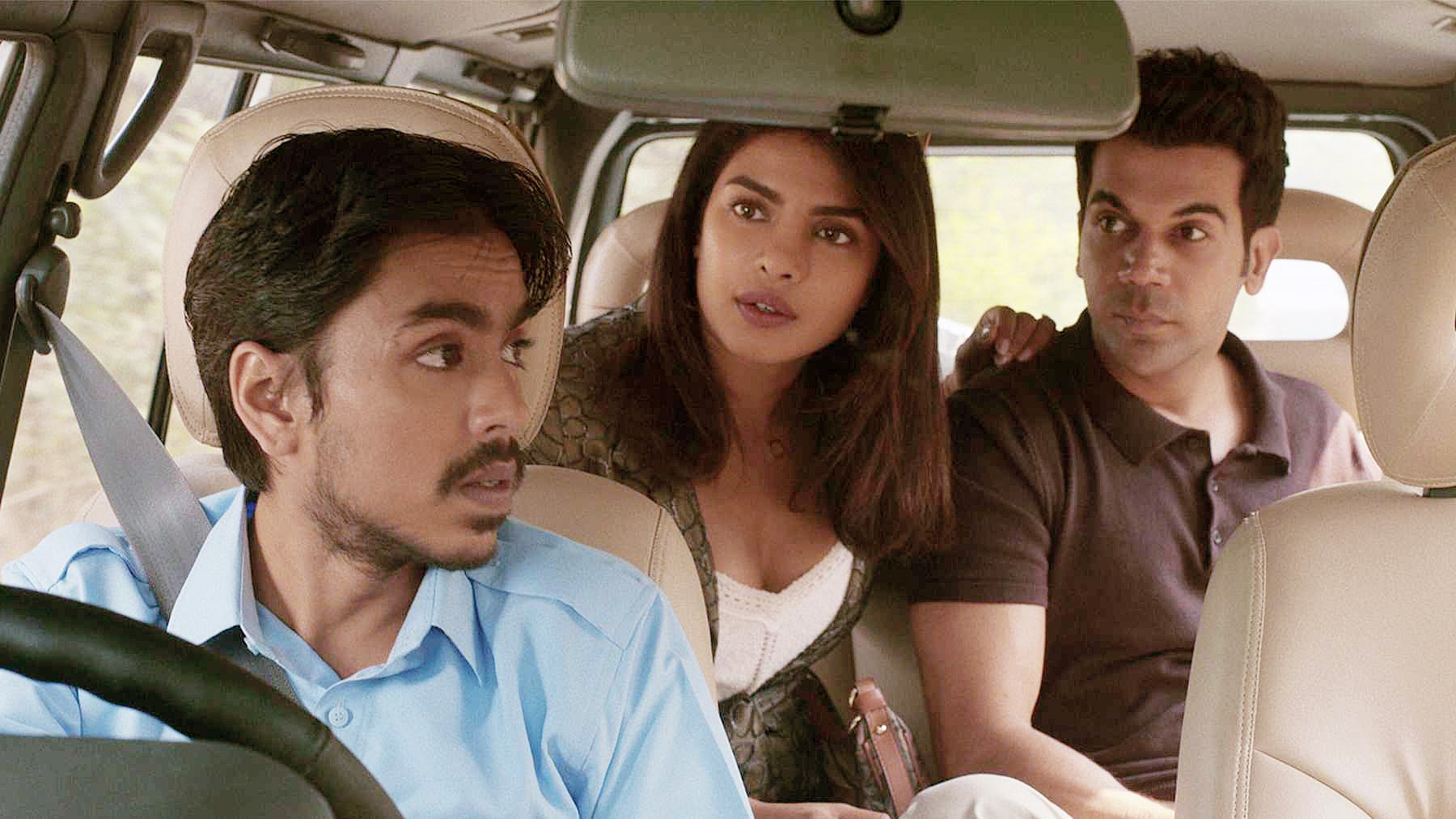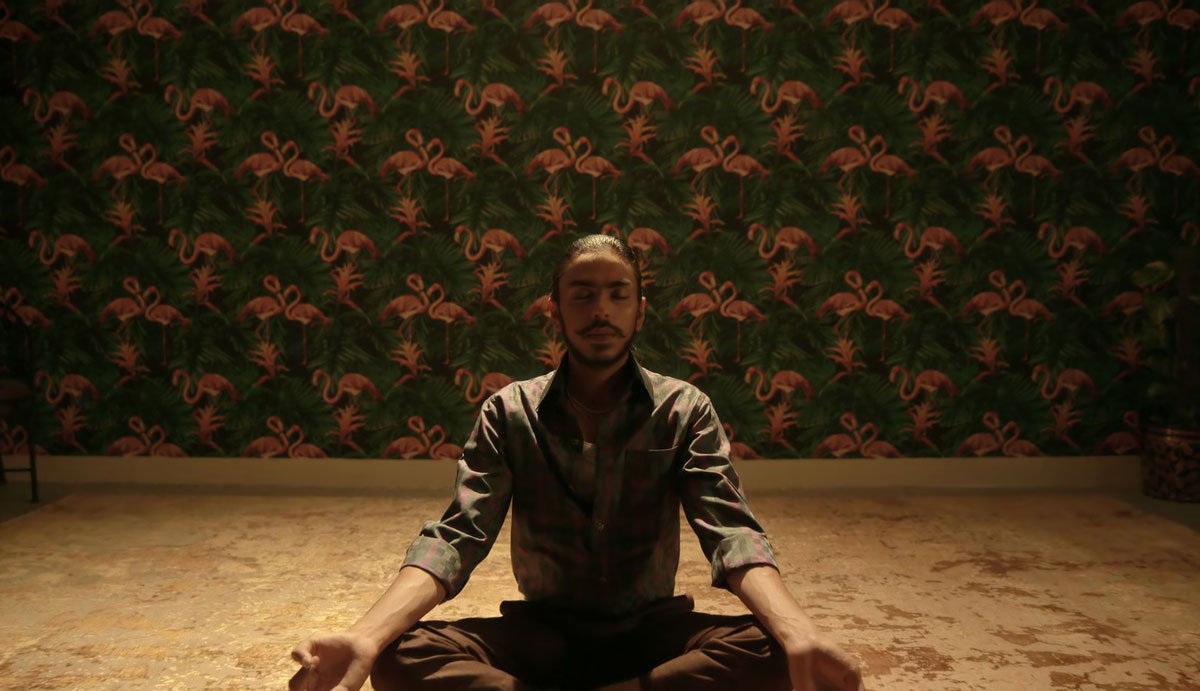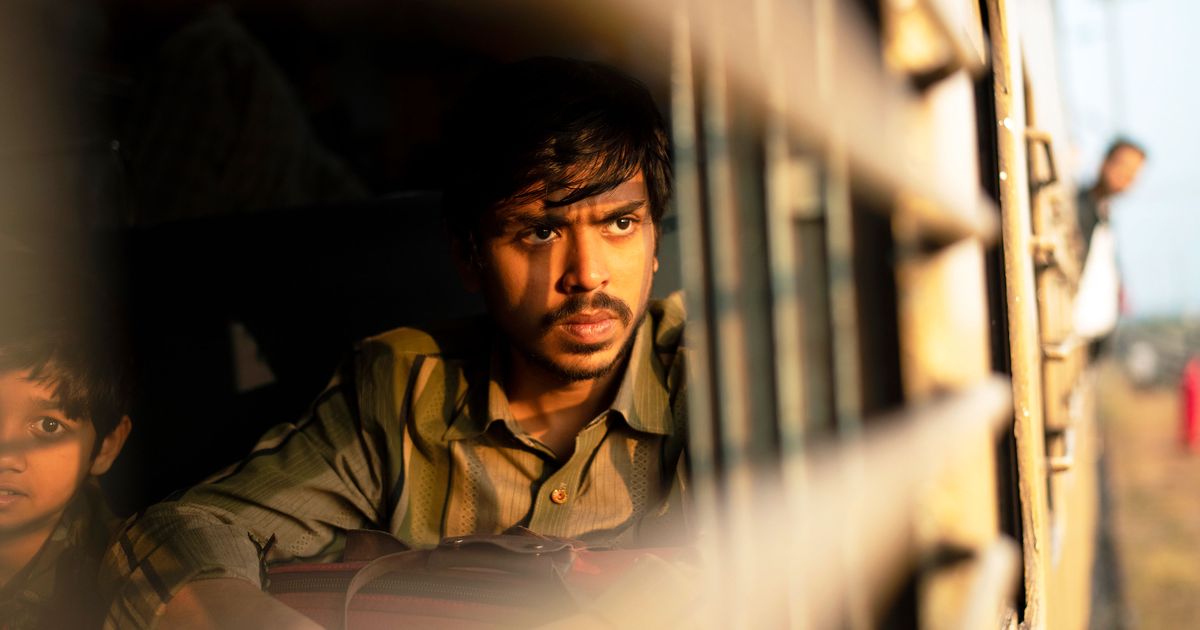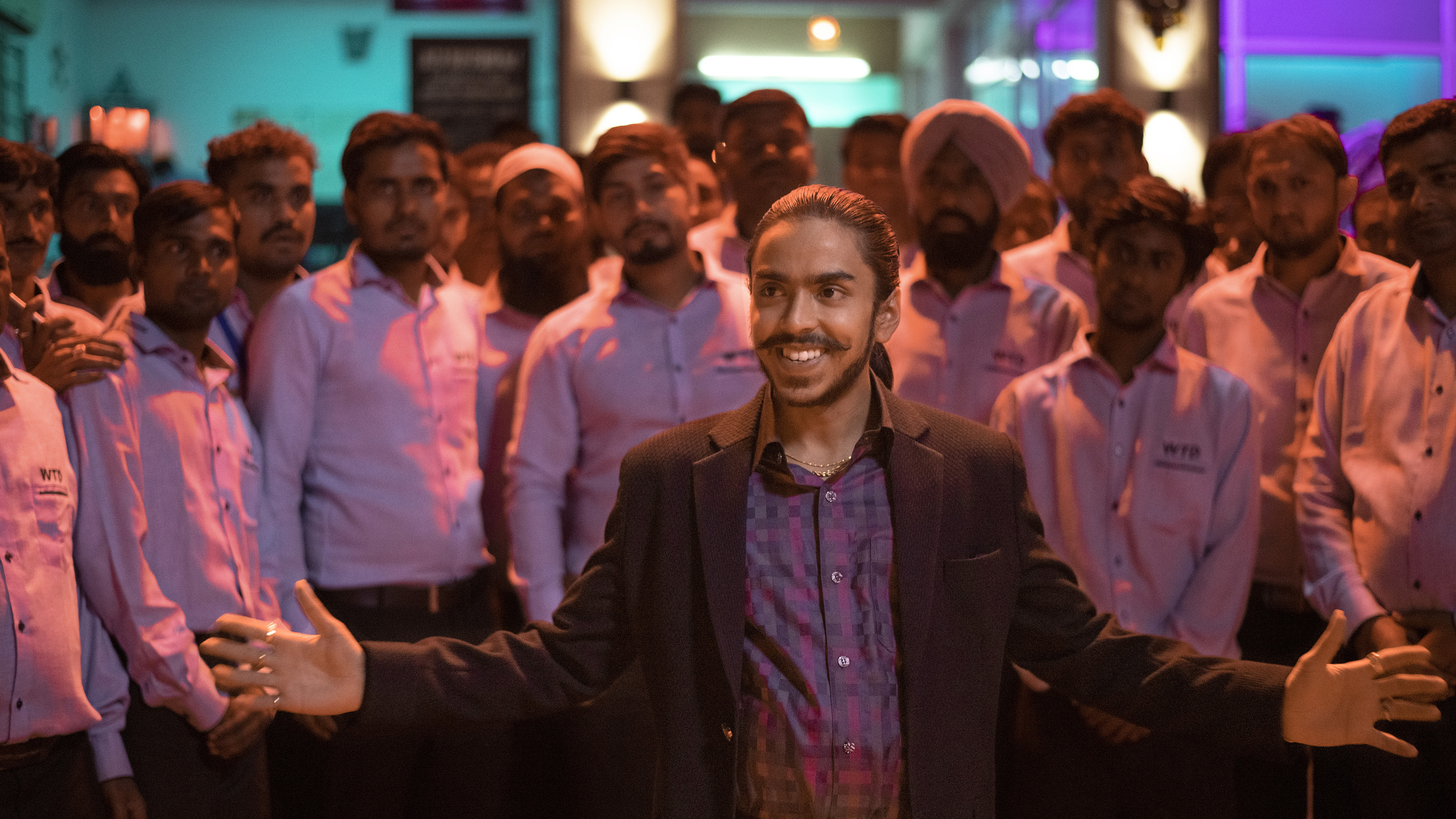By the time The White Tiger reaches its treasonous final sequence, I found myself in a state of quiet astonishment. I wasn’t exactly astonished that the film sanctioned subversive violence as a plausible means of climbing the social ladder. Nor was I astonished that the subversive violence miraculously succeeded without punitive retribution. What I was most boggled about was how its incendiary ending was portrayed as the rudimentary answer to societal injustice—sermonized with very little if any self-examination.
This piqued my curiosity. The hubristic certitude that violence was the obvious recourse to systemic poverty seemed to tap into a very Nietszchean sense of nihilism pervading cinema and the general zeitgeist today. Spiritually fatigued and fed-up with capitalism, culture increasingly favors seditious fantasies: it is quite okay with circumventing classical principles of virtue and vice so long as the evil and powerful get upended. Moral transgression is not necessarily novel in fiction. It is not unusual for stories to blur the lines between good and evil. In fact, equivocality is often a feature, not a bug of good storytelling. But as seen with The White Tiger, the lines aren’t blurred so much as reversed. We’re becoming borderline propagandistic in our stalwart defense of usurpation. Unapologetically brazen, narratives like The White Tiger not only defy virtuous lessons of moral ambiguity—they outright advocate for rebellious villainy.
This shift makes sense. Trapped in cutthroat caste-systems and market economies that reduce human relations to a collision of intersecting ‘wills to power‘ vying for material dominance, the vast majority have naturally grown bitter about the elect few who own and control most of society. Lacking the ever-elusive intellectual elixir that would allow us to topple the system, and too placated by globalization’s spoils to actually revolt, we’ve withdrawn into stories that celebrate the one-in-a-million (or billion) exceptions: the slumdog millionaire, the übermensch, the metaphorical white tiger. And we’ve grown accustomed to extolling any subversive character, regardless of their virtuousness or dignity.

Above all, the plot of The White Tiger is a traditional rags-to-riches story. It deviates, however, in its tone and methods: methodically showing a hero’s journey steeped in iniquity and slippery shrewdness, and nevertheless championing it. This angsty political messaging is bold. It is also particularly surprising given that the film was adapted and directed by the typically tender Ramin Bahrani.
For those unfamiliar with Bahrani by name, you may recognize his underrated filmography: It includes solid entries like Man Push Cart, 99 Homes, Chop Shop, and Plastic Bags. All of his previous films share many commonalities: namely, their unifying sentiment of pity for the plighted and the damned. Deviating quite drastically from his compassionate and tender proclivities, The White Tiger is a stark detour from his usual pacifism. It feels as if—perhaps reflecting a thermal shift in culture itself—Bahrani’s patience with narratives reinforcing ‘servant-morality’ / ‘slave-mentality’ has run its course. It feels as if he’s done with bittersweetly depicting resilient souls scrappily subsisting amid inescapable poverty. It feels as if he is ready to repudiate the rooster coop: to summon a coup.
Of course, with The White Tiger Bahrani was working with source material—adapting Aravind Adiga’s novel of the same name. But he chose this story for a reason. And furthermore, had he added even the slightest tonal shift during the final act and monologue, a more sensitive and nuanced narrative could have easily been constructed. This didn’t happen. Instead of deescalating the narrative’s vindictive nihilism, Bahrani stokes it with sharp visual touches. He’s still working in familiar territory, focusing on a central character who’s stifled by in socioeconomic inequities and saturated with pathos. However, this time there’s a feisty edge.
Through Balram (Adarsh Gourav)—a self-made member of the Halwai caste who deploys guile, subterfuge, and Shakespearean levels of treason to climb up the social ladder—Bahrani exalts a depraved sort of expediency. For a purportedly ‘clever’ protagonist, Balram presents a fairly unimpressive degree of resourcefulness. His appeal, instead, stems from his covetous fury and his indignant victimization. He stands out because he decides to capitulate to unfairness—daring to break from the decorum of docility. His exceptionality arises from the fact that he refuses to be just another weary, servile member of the lower caste.
The absence of astuteness is a major modification within the rags-to-riches template. Partaking in a series of uncreative machinations, Balram merely kills his master and flees, disguising himself ever so slightly. These methods are not very crafty nor artful, and thus the audience cannot simply become apologists of Balram’s nefarious ploys by virtue of appreciating his skillful wit and adroitness. A disquieting anti-hero at best and a sympathetic villain at worst, Balram oddly receives full support from the film’s ideological denouement—even without earning it. For someone who murders, cheats, and lies his way to the top of a small taxi empire, he is uncomfortably vaunted without shame or ambivalence.
Sure, many Horatio Alger Jr. rags-to-riches stories revolve around unlikeable figures. Similarly, many coming-of-age stories revolving around renegade trickster figures (i.e. Huckleberry Finn) showcase adventurous revisions of traditional morality. Yet, the moral compass of Twain’s Huckleberry Finn, to go with our example, is ultimately edifying: offering a novel, transcendental moral compass to appreciate. However, Balram is far from commendable, even as an iconoclast. He turns downright wicked. And by exonerating his diabolic shifts and homicidal ends, The White Tiger forfeits any opportunity to take the moral high-ground. Instead, it outright endorses his illicit behavior and villainous incivility.

Thus, by electing to direct The White Tiger, it feels as if Bahrani, like the zeitgeist, has reached a rupturing point. Instead of pity and woe, he seems to have grown wrathful: eager to ignite the embers of class warfare by affirming a Marxist-esque insurrection. But Marxism doesn’t quite apply here, either. Balram offers nothing in terms of ending class inequity or restructuring society. He is merely as capitalistic as his masters were. Aligned with the popular sentiments and intellectual rabble-rousing of the current age, the film seems to mostly mirror culture itself. Incessantly titillated by thoughts of avenging economic disparity, very few political narratives seem the least bit interested in intellectual synthesis or reconciliatory resolutions. To the contrary, they predominantly lean toward inflammatory ends of unabashed reprisal.
The accelerating rise of this faddish discontent is telling. Mired in cynicism toward the exploits of the affluent, our narratives enthusiastically harbor mutinous fantasies. On an emotional plane, the proliferation of popular pro-insurgent narratives is predictable and relatable. On an intellectual level, the near unanimous acceptance of pro-insurgent narratives as welcomed panaceas disturbingly proves how easily mollified the public can be. Too often, we unreflectively praise stylish satirical rebukes of class inequity, while the complex conversations and questions they should provoke are subconsciously shoved aside entirely.
What is particularly disheartening is how easily underdeveloped satires gain artificial political and moral traction, when at bottom they are intellectually vapid and unfeasible. Today, a craven and sloppy character like Balram is unrealistically left off the hook in a matter that belies credulity. Not every politically motivated murderer need be undermined by karmic justice or comeuppance; but they should be placed under some degree of scrutiny. We should demand creative, viable insurrectionary designs. Just because we side with a subordinate doesn’t mean we should forgive flimsy storytelling or ardently exonerate their darker impulses. Clearly, extremism onscreen is the fashionable byproduct of our collective discontent. But slights and grievances should not permit a character full moral license to unscrupulously imitate the same negative characteristics defining their overlords and aggressors.

Treacherous characters, even charismatic mutineers, are as ancient as storytelling itself. What feels unique lately is the extent to which our dissident archetypes are alleviated of the responsibility to provide moral or social reform. They are often as bereft of probity and ingenuity as their enemies—if not more so. Yet, these unorthodox rebels are cheered on as they revolt, even when they lack the motivation and desire to supplant tyranny with a magnanimous alternative. Attractive solely for being contrarian underclassmen, they are allowed free reign to pursue economic gains via crassly opportunistic ends: validated strictly by default of the fact they successfully take down society’s merciless gatekeepers. Yet, more often than not, they embody capitalism incarnate: representing the uncharitable values of competitive cunning and greed. They emerge from the trendy stance to slant more Hobbesian than Lockean: to elevate warfare over law, craftiness over valor.
That said, the predominant ethos of The White Tiger is not exactly Hobbessian either—as apt as the comparison may seem. It is not merely calling for an anarchic return to brutish power relations in nature. The narrative’s subversive vision is more a class-based campaign, and remonstratively so. It is an explosion of pent up frustrations toward social stratification. Its condonation of violence primarily aligns with the dynamics of caste. Its moral calculations revolve very neatly on the axes of hierarchical positions.
This primary qualifier in the film eclipses classical notions of virtue and vice. Actions are weighted differently depending on one’s social rank. Mild micro-aggressions (i.e. subjecting a flunkey to the indignity of washing one’s feet) are deemed worthy of pillory and vengeance—perpetrated, as they are, by the powerful. Meanwhile, lying, cheating, and sabotaging one’s peers (as Balram does) are acceptable so long as our charming transgressor is indigent and mad about the status quo.
To me, this black-and-white dichotomizing of good and evil amongst purely socioeconomic lines does a disservice to the instructive power of fiction. It reduces the thorniness of caste-based inequities to elementary equations that offer little insight. Insultingly, it simplifies the intricate social conundrums that emerge when money and morality intersect. Without a doubt, lurking underneath the insurrectionary glamor of The White Tiger is an infinitely deeper critique of India’s troubled caste system. And for a decent portion of the film, it dabbles with such complexity in a few of its more convoluted subplots.

For one, the film intriguingly examines the guilt of Ashok Shah (played by Rajkummar Rao)—Balram’s master and a millennial-aged Indian aristocrat. Privy to western sensibilities after studying in America, Ashok largely rejects the old-world traditions of India. He’s privileged yet progressive, and clearly wants to abolish the master/servant binaries of India’s orthodox caste system. He is also curious of Balram as a person, and shows genuine empathy. However, when tragedy strikes, Ashok switches to survival mode. Under the pressure of his domineering father, he agrees to blackmail Balram to take the fall for his girlfriend Pinky’s fatal hit-and-run that occurred while she was driving drunk.
This tactical duplicity makes him unlikeable. But he isn’t initially corrupt nor odious. For most of the film, in fact, Ashok is generous: actively advocating for greater equity and casual amicability between Balram and himself. Similarly, the narrative shows his girlfriend Pinky Shah (played by Priyanka Chopra) to be compassionate as well: amplifying her feminist, liberal, occidental outrage as she criticizes India’s ingrained misogyny.
During the first and second act, Balram is complex as well: filled with interesting contradictions. Both charismatic and flawed, affable and off-putting, he feels like a real person. His uncouth internal monologues believably muddy his identity—diluting his sanctimonious persona into something real and distorted. As Balram ogles at women, muses in a gauche manner about a man’s congenital skin disease, sells out his benevolent friend by revealing he practices Hinduism, mocks his family’s provincial mentality, slaps his nephew across the face, and shamelessly abandons his ancestors, he is refreshingly polyvalent.
Just look at the scene where Balram poignantly meditates on the permanency of his stained, crooked teeth. Raw and revealing, this brief moment of internalized self-loathing is remarkably touching. Patently metaphorical—as so much is with The White Tiger—Balram plaintively mopes about how hard he scrubs to achieve pearly whites to no avail. Unfortunately, his imperfect teeth bear the residue of his upbringing: a visible reminder that poverty is never easily brushed away. The teeth painfully illuminate the physical and psychological plaque and tartar that accumulates, like grime, over time.
This Balram—savvy yet boorish, charming yet vulgar, intelligent yet socially awkward, loyal yet felicitously duplicitous—is credibly rounded. But by the film’s end, this version is too multifaceted for the polemical piety the narrative exigently wants to preach. His multiple shades and contours must be eliminated for the sake of punditry. Instead of examining the manifold downsides of poverty and the moral murkiness of realistic remedies, The White Tiger keenly veers toward firebrand ends: transforming Balram into a self-righteous prophet of ridiculous luck and wiliness. And in doing so, the film becomes not only quixotic, but borderline baseless, too.

It is not until fairly late in the third act when Balram’s perfidious offensive begins. After stabbing Ashok to death with shards of a glass bottle, and then stealing his master’s 4 million rupees, Balram bribes governmental officials to round up any and all taxi drivers that threaten his monopoly on the local economy. It works, and he ends the film owning the dominant taxi business in town: essentially controlling the market.
Somewhat surprisingly, Balram is fervidly praised for dethroning Ashok and elevating his position in the caste system. By the time we hear his smug and cheeky final monologue, Balram is an unrepentant upstart: bragging about cutting corners and undermining others. He even callously dismisses the news that his peasant relatives have been murdered, presumably by Ashok’s avengers. Then, in a somewhat trivial yet illuminating scene, he applauds his nephew for demanding a second serving of ice cream. The moment is quotidian yet highly symbolic. Clearly, having broken out of the proverbial “rooster’s coop”, Balram is now wholeheartedly peddling the perks of selfish authoritarianism to his little protégé.
It should be noted that Balram does claim to deviate slightly from his previous masters. In a voice-over montage, he proudly distinguishes his supposed humaneness: “I don’t treat my treat my drivers like servants. I don’t care about their religion, and I certainly don’t call them my ‘family.’ They are my employees. I make them sign a contact and I sign it too.” But within the substructure of his business, he is very palpably a figure of power and tyranny. Despite his lukewarm pitch about fixing the entrepreneurial model to be more sympathetic to workers’ needs, his taxi start-up is a crass, capitalistic enterprise that thrives off shifty bribes and behind-the-scenes negotiations. Make no doubt about it: the taxi chauffeurs are lackeys, just as he himself formerly had been.

In essence, Balram becomes his former enemy. He turns into the merciless, conniving arriviste. And his unapologetic attitude is perhaps most provocative of all. Boasting about the sinful steps he took to helm his start-up, Balram impertinently reflects: “Even if they catch me, I’ll never say I made a mistake. It was all worthwhile to know […] what it means not to be a servant.” His delivery is cocky: spoken without a morsel of modesty. Clearly, Balram wants us to know he has unfettered himself from the antiquated framework of ethics. Self-satisfied and remorseless, he flat out dismantles the foundations of religious doctrine—choosing pride over humility, power over servitude. Concluding that outright murder is better than acquiescence, he effectively argues that morality is a loser’s game.
The origins of his backlash are traceable. Beleaguered by a skewed caste system that treated him unfairly—with Ashok’s father (The Stork) forcing him to confess to Pinky’s act of vehicular manslaughter—we understand his animosity. Why he became a maverick and a brave insubordinate makes sense. The fact that he starts to fake invoices, hawk petrol, and use Ashok’s SUV as an unlicensed taxi is convincing stuff. Objectified by his masters as an expendable resource, one can fully respect his consequential lack of loyalty, and the ascent of his plucky, enterprising mentality.
The problem is the heights to which Balram’s disobedience ascends—and how the film’s dubious denouement transforms him into an unlikable mirror of the persona he previously despised. In a better film, this would be a cynical move about the endless perpetuity of power corrupting. However, this screenplay doesn’t seem to care about grey territory. It also doesn’t seem to care to qualify the unrealistic nature of Balram’s unconventional escape.
Near the end, Balram explicitly explains how he avoided the police. Interestingly enough, the argument is not logistical or commonsensical in the least. Rationalized entirely on mythological terms, Balram claims to have gotten away by virtue of inverting the cliché narrative of cosmic justice:
“What happens in your typical Hindi film about murder? A poor man kills a rich man and then gets nightmares of the dead man pursuing him screaming: ‘Murder! Shame!’ It doesn’t happen like that. The real nightmare is the other kind—where you didn’t do it.”
In simpler terms, Balram fully acknowledges that his getaway first and foremost is the byproduct of storytelling. Without a credible alibis for how he evaded the police, the spurious reasoning is very straightforward. Balram’s admits his arc doesn’t have to make sense: for he is, more than anything else, the figment of a subversive cinematic thesis.
Refusing to be subject to the archetypal downfall of the hackneyed Hamlet figure, Balram shamelessly boasts about the upsides of killing one’s master. And he does so in a visually revealing final monologue, the words synched to an orchestrated tableaux—of Balram flanked by his posturing employees outside the taxi headquarters. Given this images accompanying his voice-over, Balram’s words become a direct proletarian manifesto. And while some thoughtful articles have construed the ending as satirical, I simply don’t see it. The White Tiger too vehemently sympathizes with Balram’s POV: vindicating it, celebrating it, barricading it. It even unnaturally expands his POV to make a loaded comment on modern geopolitics, stating that “the future of the world lies with the yellow man and the brown man now that our erstwhile master, the white-skinned man, has wasted himself through buggery, cell phone usage, and drug abuse.”

It is all way too transparent. The White Tiger is clearly exhorting for an end of the current hegemonic system: summoning the individual to step up and fight. That is why it Balram is such a relatable embodiment of class inequity, nepotism, and favoritism. That is why we feel each slight, insult, and injury he endures. That is why we are primed to deride the mansions of the upper caste, and pity the squalid subterranean living quarters of the servants. That is why we share his rage and frustrations at being sold out as the scapegoat after Pinky tragically runs over a pedestrian. That is why we feel indignant when he is coerced to play along as the fall guy, with his impoverished family lavishly paid off in exchange for his freedom. And that is why he is belittled by endless demands of sycophantic propitiation.
However, while all of this humanizes Balram as a sufferer of caste disparities, and provides a framework to justify his rebellion, the methods and choices he makes are still far from sagacious or honorable. At best, Balram is neither good nor evil, but a constellation of circumstantial impulses. He is certainly not wholly disagreeable. But it is equally irresponsible to turn him into an icon and example of revolutionary mettle. If anything, Balram story is tragic. He is someone forced by birthright to either comply with icky inferiority or abhorrent violence. Neither are appealing ends, and neither should be unilaterally applauded or exempted.
Misgivings aside, I appreciated the underlying intentions of the The White Tiger. Its focus on how religious creeds and dogmas perilously perpetuate passivity is intriguing. I was also entertained by the political axioms and philosophical adages permeating its screenplay. Familiar with the region’s rich tradition of Hinduism—which has long relied on aphorisms to teach theological percepts—the axioms were certainly germane. The bite sized axioms The White Tiger repeatedly summoned are not only beloved by Hindus, but pervade Indian pop-culture at-large. Platitudinal and enlightening , these truisms circulate the political, spiritual, and fictional narratives of the nation: heard everywhere from ashrams to Bollywood blockbusters to Modi’s political rallies.
India’s long-standing reverence toward pithy axiomatic vessels of truth is deeply entrenched its vibrant yogic and philosophical history. And this unique style of framing the world has many perspectival consequences: both positive and negative. The power of axioms lie in their epigrammatic concision and wittiness. The danger of axioms is that they often encourage overly succinct comparisons and obdurate dualities. Over time, dualistic thinking can devolve from an amusing intellectual comfort to a method that calcifies and constrains the mind. Averse to multiple ways of seeing things, this framework can perilously flatten the world into oversimplified binaries.

In my estimation, The White Tiger falls into the trap of naivety. Balram is the byproduct of dualistic constructs, which is why he constantly enumerates master / slave dichotomies:
“Do we loathe our masters behind a facade of love, or do we love them behind a facade of loathing?”
“The Indian entrepreneur has to be straight and crooked, mocking and believing, sly and sincere, all at the same time.”
There is much insight, but also much overgeneralization, in these specious meditations. The reflections show how Balram is stuck perceiving everything in karmic loops and qualitative polarities. He has retreated into a prescriptive system: a tidy way of compartmentalizing the world into distinct categories. His observations have pruned the kaleidoscopic, dynamic, and quite inscrutable inter-dynamics of humanity down to a pith. Poetic and clever, the decorativeness of his phrasings lead him into an ouroboros: as the snake eats its own tail, the mind outthinks its own thoughts. Thus, Balram is stuck in a self-enclosed system where everything is either A or B, and choosing between them entails making a tenuous conjecture.
In the 20th century, preeminent Continental philosophers (Jacques Derrida, Gilles Deleuze, Edmund Husserl) thoroughly debunked the patterns of such binary thinking. Quite cogently, they pointed out how dualism operates. After charming with circular logic, dualistic concepts seduce the mind’s fetishistic enjoyment of paradoxes and tautologies. When prematurely reached, paradoxes and tautologies can make one believe they’ve exhausted all intellectual options: that they’ve arrive at our final destination of moral relativism.
In other words, the danger of binary thinking is that it can sneakily lead the mind to a nihilistic dead-end. Once stuck in a conceptual quagmire, cynicism and discontent will gradually emerge until finally, in an act of jaded desperation, the intellect begins to excuse its moral apathy—and fills its void with selfish impulses that masquerade as meaningful. The result of this is nihilistic sophistry—a style of rhetorical persuasion that will even approve of uncorroborated correlation and fallacious reasoning so long as it is effective chicanery.
Summing this entire intellectual pathology up in a single term, the brilliant French philosopher calls it an ‘arboreal’ system. The term arboreal, like so many of of Deleuze’s concepts, is stuffed with connotative associations. Within his philosophical context, the term signifies a restrictive root system: the branches of thought that are entangled to the traditions of dualistic theology and philosophy. The alternative Deleuze touts is the ‘rhizome.’ Rhizomes are root systems that escape the binary structure. Instead of forming binaries, they disperse underground without direction, rhyme, or reason. Interconnected yet decentralized, the rhizome disorients all distinctions of beginning and end, left and right, up and down.

Why then is arboreal thinking so dangerous? Beyond its nihilistic endgame, another key flaw is that it has the tendency of masking needs as convictions, and then convictions as absolute sureties. It obfuscates life’s capriciousness and moral groundlessness by espousing the righteous dominance of a single reading. Such certitude is what makes The White Tiger’s blatant misappropriation of the Muslim poet Igbal’s poetic line—“The moment when you recognize what is beautiful in this world, you stop being a slave”—so egregious.
The film laughably and shockingly deploys this poetic verse to justify of Balram’s capitalistic machinations. Igbal’s sentiment could not be any more antipodal to the film’s mercenary interests. The beauty Igbal is references is a tribute to life’s ethereal, spiritual treasures. But by cleverly fixating upon the surface terminology and eliding the deeper meaning, the narrative redefines Igbal’s concept of beauty as something that can be materially purchased or purloined. With casuistic misdirection, it slyly misconstrues Igbal’s message as speaking to the power of desiring actual things. Recognizing ‘what is beautiful’ becomes the literal equivalent of window shopping. For Igbal, on the other hand, beauty is rooted in the power of perception as a means of seizing true autonomy and contentment.
Despite being abhorrently misunderstood, Igbal’s mystical line of poetry returns us to the central moral dilemma of The White Tiger: the question of what the individual should do without any meritocratic path? In such paralysis, many ancient mystics and sages taught one to look inward—to bask in the unyielding puissance of one’s own spirit, sentient awareness, and percipience. In today’s world, accepting one’s lowly fate and secretly confiding in the merits of the heart and mind is no longer vogue.
To the contrary, it is passionately rejected as the foolish byproduct of meekness and gullibility. For such cynics, material wealth impacts everything: not only one’s immediate sensory apparatus, but their capacity to perceive and think freely too. These are valid points. Without a doubt, modern capitalism strips many individuals of much more than money. By demanding labor and consuming time, it deprives the soul of ample opportunities to store up intellectual, moral, and psychological capital. Without economic stability, the chances of cultivating an inner life, philosophical bearing, or spiritual orientation become increasingly dim.

Thus, unable to access the organic bounty of treasures inherent within, many feel rightfully hopeless and resentful: fixating on the troves of earthly spoils owned by overlords. Wallowing in bitterness and spite and envy, and yet satisfied just enough to be submissive, philosophical desperation and ethical bankruptcy have become prevailing symptoms of the times. Without tenets or systems at any level to find solace in, we’ve become unruly and impatient. Like Balram, the wronged majority now seethe behind the guise of reluctant ingratiation—stealthily waiting for the moment to strike.
Though problematic, the manner in which The White Tiger reinterprets Igbal’s poetic message is quite revealing: in that it misconceives his words in a way that matches the pessimism of the times. No longer optimistic enough to hope for spiritual peace, grace, and beauty, the vast majority have resigned to exaggerative dreams of insubordination and the exploits of capitalism. While it can be fun to worship mutinies and materialism, such stories inevitably end sour because revolutionary change remains nonexistent. Jaded and detached, modern audiences have gradually become inured to appreciating the futility of satirical messages, which predominantly serve as little more than genre signifiers and hackneyed tropes.
In this light, the finale of The White Tiger feels apropos. It reinforces the dark truth that the best outlet for modern angst is fabulous pipe dreams of rousing albeit unrealistic disobedience. That is why, despite its scintillations, an unspoken sentiment of weariness underlies The White Tiger. The film knows it is make-believe. It knows it is boasting literary flair while lacking political potency. It knows it is pandering to our collective misery and frustration with society. It knows it is low-handing fruit banking in on hot take culture. It knows we are not yet desperate enough to demand more practical or subtle satirical solutions. For now, fantastical catharsis is enough.
Suffice to say, Balram is not a symbol of applicable change. All he represents is a moot substitution of moues. Despite promising to be liable for his drivers’ accidents, his temperament and demeanor are uncannily familiar to his capitalistic forbears. Balram confirms this suspicion himself by stating that he has stolen Ashok’s methods and identity through and through. Plagiarizing the tactics of his former master, he sits on an equally deplorable throne as a CEO. He doesn’t seem to be opposed to relying on vindictive, devious, or Machiavellian designs to sustain his empire. Thus, his ascent makes zero difference in the grand scheme of things. Reinforcing the cycle of capitalism, he is doomed to a repeating narrative: the only differentiation being his unique backstory and the clique surrounding him.

Sadly, by over-sensationalizing its antithetical takedown of caste power and corruption, The White Tiger overplays its canniness. In reality, it is little more than a farfetched fairy tale of one servant’s rise to glory. The screenplay barely even tries to cover its tracks. Its case for why Balram wasn’t caught by police is that he has a generic face. This is utterly preposterous. When someone as wealthy and connected as Ashok is murdered by lowly servant, a relentless manhunt swiftly follows. There is no way Balram could have gone undetected as a prominently visible entrepreneur.
This incredulity matters. It shows that ridiculous contrivance was necessary to make Balram’s insurrection both successful and pragmatic. And without such creative leniency, he’d end up rotting in jail. Therefore, in sloppily circumventing the real life ramifications of its story, The White Tiger unconvincingly equivocates about its tenability to the point of nullifying its message.
To this point, The White Tiger merely works within the realm of the symbolic. Much like the recent hit Korean film Parasite, The White Tiger is ultimately a fantasy of mimesis and imitation. In fact, the two films share many narrative parallels. Both are entertaining satires of socioeconomic disparity, yet equally devoid of coherent solutions. Their respective stories are too silly and self-contained to present a unifying message of social rectitude. Though emotionally cathartic and politically flashy, they cannot be taken seriously.
To be taken seriously, The White Tiger’s rebellious protagonist would need to be an answer to society’s endless ills. To be taken seriously, the film’s dictums would need to mitigate and not exacerbate the Machiavellian hell-scape we already live in. To be taken seriously, it would need to debunk the dualistic system of mischievous masters and malcontent minions in a way that could break the cycle. To be taken seriously, its partisan allegiances would need to not compromise integrity, decorum, trust, and decency: for equity cannot be sustained in a world where aggressive self-promotion and betrayal reign supreme. To be taken seriously, it would need to be more than a tantalizingly half-baked advertisement for getting rich quick.
Stultified by its incredulous narrative winks, the film never transcends the metaphoric. Despite its vociferous preaching, it cannot be taken literally. Its crackpot satirical energy is simply too unfeasible and ridiculous to substantiate its fundamentally earnest message. It is a tall-tale that craves to be fawned over and parroted despite lacking a sensible blueprint for sedition. Like its duplicitous protagonist, The White Tiger dangerously thrives upon deceptive charms, misdirection, and most of all, charlatanism. When undressed, it is nothing more than sheepish feline in sheep’s clothing.



